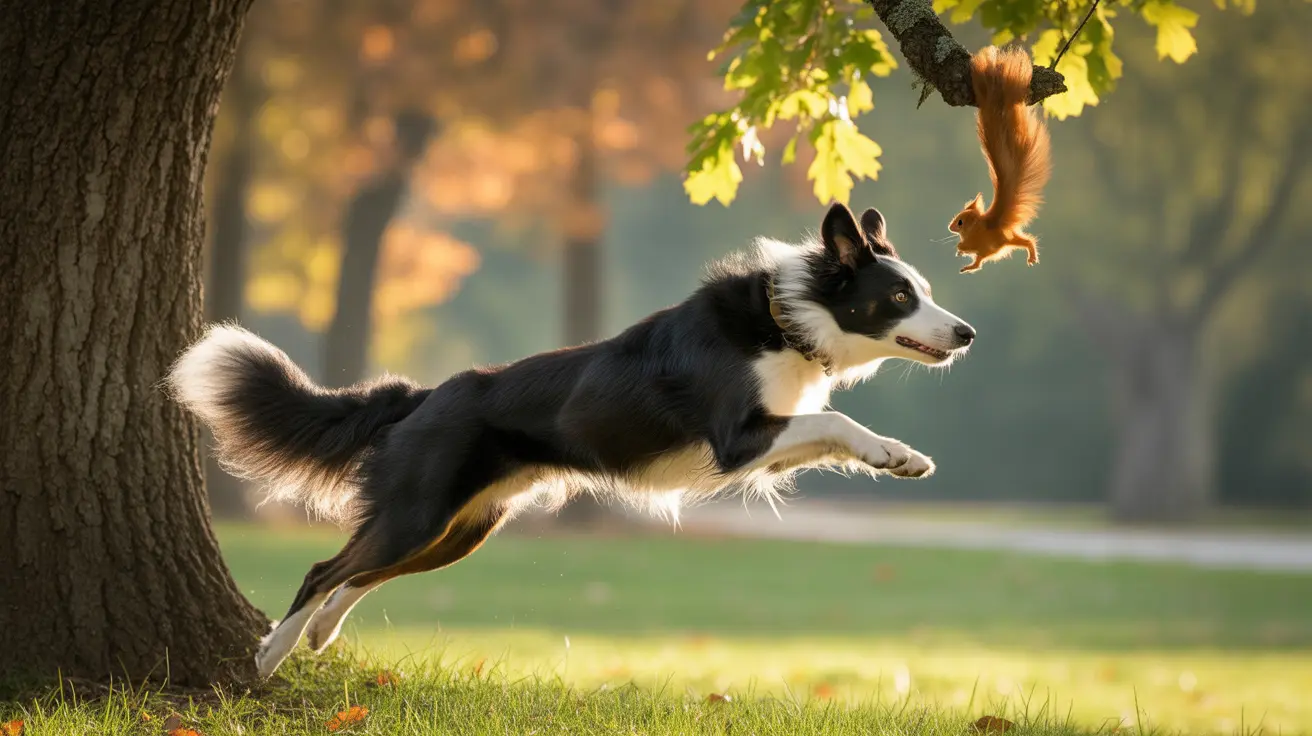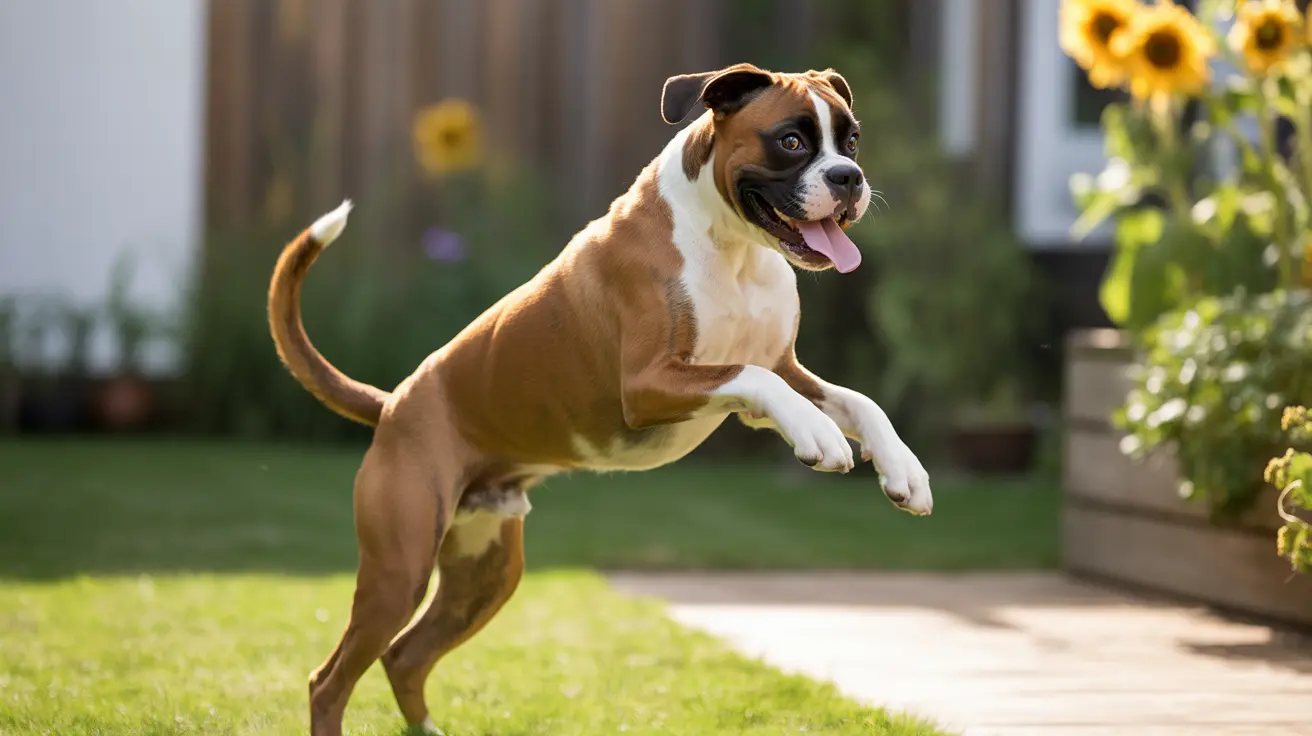How to Master Managing Dog Prey Drive: Expert Training Strategies for High-Drive Breeds
If you've ever watched your dog suddenly lock onto a squirrel, cat, or jogger with laser-like focus, you've witnessed their natural prey drive in action. Managing dog prey drive is one of the most challenging yet crucial aspects of responsible dog ownership, especially for hunting breeds and high-energy dogs. While this instinctive behavior cannot be completely eliminated, it can be effectively channeled and controlled through proper training techniques, creating a safer environment for your dog and the community around them.
Understanding how to work with your dog's prey drive rather than against it is essential for building a strong, trusting relationship while ensuring everyone's safety. This comprehensive guide will provide you with proven strategies, tools, and training methods that professional trainers use to help dogs with strong prey drives become well-behaved, controlled companions.
Understanding Prey Drive: The Foundation of Effective Management
Prey drive is an instinctive behavior found in all dogs to some degree, inherited from their wolf ancestors through thousands of years of evolution. This natural hunting instinct manifests as a complex behavioral sequence that includes environmental orientation, stalking, creeping toward prey, chasing, grab-biting, kill-biting, possessing, dissecting, and consuming.
The intensity of prey drive varies significantly among individual dogs and breeds. Dogs bred specifically for hunting skills, such as hounds, terriers, sporting breeds, and herding dogs like Australian Shepherds and Border Collies, typically display stronger prey drives. However, some breeds not originally bred for hunting, including Boxers and Huskies, can also exhibit intense prey-driven behaviors.
Recognizing Your Dog's Prey Drive Patterns
Managing dog prey drive effectively begins with understanding how your specific dog's instincts manifest. Some dogs are motivated by the thrill of the chase, while others are driven to catch and possess their target. Common manifestations include intense staring or stalking, sudden pulling toward moving objects, herding behaviors toward people or other animals, and excessive digging or pouncing motions.
The Science Behind Predation Substitute Training
Modern dog training has evolved significantly since traditional suppression methods proved ineffective and potentially harmful. Predation Substitute Training, developed after Germany banned shock collars in 2007, represents a revolutionary approach that works with your dog's natural instincts rather than against them.
This methodology consists of four essential components that form the foundation of successful prey drive management:
Management and Prevention Strategies
Since prey drive cannot be completely eliminated, proper management becomes your first line of defense. This involves securing your environment and using appropriate equipment such as well-fitting harnesses and long lines to maintain control during training and daily activities. Understanding that management is ongoing rather than a temporary solution helps set realistic expectations for both you and your dog.
Predation Substitution Tools and Techniques
Rather than suppressing the entire predatory sequence, this approach allows dogs to perform safe portions of their natural behaviors. For example, permitting standing and stalking behaviors while redirecting the chase component provides an outlet for instinctive drives without compromising safety or control.
Essential Training Methods for Prey Drive Control
Building Foundation Commands
Successful prey drive management relies heavily on solid foundational obedience training. Key commands that prove invaluable include "Watch Me," "Check-In," and "Leave It." These commands help redirect your dog's focus and interrupt stalking or chase behaviors before they escalate into uncontrollable situations.
Training should focus on the three D's: Distance, Duration, and Distraction. Begin with simple exercises in low-distraction environments, gradually increasing the challenge as your dog demonstrates reliability and self-control.
Rocket Recall: Emergency Response Training
Traditional recall training often fails when dogs enter "chase mode" because the excitement and satisfaction of pursuing prey outweighs the value of returning to their owner. Rocket recall addresses this challenge by pairing emergency recall cues with exceptionally high-value rewards that can compete with the thrill of the hunt.
This specialized recall training involves creating a recall cue that's reserved exclusively for emergencies, ensuring it maintains its power when you need it most. The key is using rewards that your dog finds more valuable than the prey they're pursuing, which often means using their absolute favorite treats or toys.
Impulse Control Development
Training your dog's impulse control is crucial for managing prey drive effectively. This involves asking your dog to demonstrate calm behaviors during exciting situations, helping them learn to think rather than immediately react when they encounter prey stimuli. Regular practice with impulse control exercises during play and training sessions builds the mental muscles your dog needs to make better choices in high-stimulation environments.
Choosing the Right Training Tools and Equipment
Harnesses and Long Lines
Selecting appropriate walking equipment is essential for safety and training success. Well-fitting harnesses provide better control than traditional collars while distributing pressure more evenly across your dog's body. However, it's important to note that harnesses should only be used with dogs that have been properly trained, as they can actually increase pulling power during prey-driven episodes.
Long lines, also called drag lines, serve as invaluable training tools that provide your dog with freedom to explore while maintaining your ability to regain control when necessary. These lines should be used in appropriate environments and require proper handling techniques to avoid tangling or injury.
Safe Correction and Redirection Tools
When immediate intervention is necessary, safe correction aids such as air canisters that emit noise and calming pheromones can effectively interrupt prey-focused behavior without causing pain or trauma. These tools should be used as part of a comprehensive training program rather than as standalone solutions.
Training collars, when used at all, should only be employed under professional guidance and never include shock, prong, or choke-style devices. These punishment-based tools can cause trauma, aggression, and breakdowns in the trust relationship between you and your dog.
Healthy Outlets for Predatory Instincts
Breed-Specific Activities
Providing appropriate outlets for your dog's prey drive is essential for their mental and physical well-being. Different breeds benefit from different activities that satisfy their specific hunting instincts. Herding and retrieving breeds often enjoy chasing flying discs or squeaky balls, while terriers might benefit from designated digging areas and sports like Earthdog or Barn Hunt.
Dogs that are motivated by scent and stalking behaviors can find satisfaction in mantrailing, scent work games, or AKC Scent Work competitions. These activities provide mental stimulation while channeling predatory instincts into controlled, safe environments.
Predation Substitute Games
Creative games that mimic parts of the predatory sequence offer safe alternatives to actual hunting behaviors. For example, allowing your dog to rip apart specially designed toy bags filled with treats satisfies the dissecting and consuming portions of the prey sequence without involving live animals.
Treat-dispensing toys and puzzle feeders can satisfy your dog's motivation to hunt and forage while providing mental enrichment. These tools are particularly effective for dogs whose prey drive is motivated by the search and capture aspects of hunting rather than the chase itself.
Specialized Training for High-Distraction Environments
Walking Strategies for Prey-Driven Dogs
Successfully walking a dog with high prey drive requires specific techniques and constant vigilance. Training your dog to heel and maintain focus on you forms the foundation of safe walking practices. During walks, provide plenty of praise and treats for remaining calm near potential prey animals, reinforcing the behavior you want to see.
When possible, avoid areas with high concentrations of potential prey until your dog's training is more advanced. When avoidance isn't possible, maintain extra vigilance and be prepared to implement emergency recall or redirection techniques as needed.
Environmental Desensitization
Gradual exposure to controlled prey stimuli helps reduce your dog's reactivity over time. This process involves carefully introducing your dog to potential triggers at distances and intensities they can handle successfully, gradually increasing the challenge as their self-control improves.
Socialization and environmental desensitization are particularly important for reducing chasing behaviors toward people, cyclists, and joggers. These training sessions should always be conducted in controlled environments where you can maintain safety for all involved.
When to Seek Professional Help
Recognizing Problematic Behaviors
While many aspects of prey drive management can be addressed through dedicated home training, certain situations require professional intervention. Dogs with extremely strong prey drives that pose safety risks to themselves, other animals, or people should work with experienced trainers who specialize in predatory behavior modification.
Warning signs that indicate the need for professional help include inability to interrupt chase behaviors once started, aggression toward smaller animals or prey-like objects, and escalating intensity of prey-driven behaviors despite consistent training efforts.
Benefits of Professional Training Support
Professional trainers bring specialized knowledge and experience that can accelerate your dog's progress while ensuring safety throughout the training process. They can also provide customized training plans tailored to your dog's specific breed characteristics, individual personality, and environmental challenges.
Frequently Asked Questions
Can prey drive be completely eliminated in dogs?
No, prey drive cannot be completely eliminated as it is an instinctive, genetic behavior inherited from wolves. However, it can be effectively managed and channeled through proper training techniques, allowing dogs to live safely and harmoniously with their families while expressing their natural instincts in appropriate ways.
Which dog breeds have the strongest prey drives?
Breeds originally developed for hunting and herding typically have the strongest prey drives, including Australian Shepherds, Border Collies, various terrier breeds, hounds, retrievers, spaniels, pointers, Beagles, and Malamutes. However, some breeds not bred for hunting, such as Boxers and Huskies, can also display intense prey-driven behaviors.
Are shock collars effective for controlling prey drive?
Shock collars and other punishment-based training tools are not recommended for prey drive management. These devices can cause trauma, aggression, and breakdowns in trust between dogs and their owners. Modern, positive reinforcement-based training methods have proven more effective and safer for long-term behavior modification.
How long does it take to train a dog with high prey drive?
The timeline for managing prey drive varies significantly depending on the individual dog's breed, age, training history, and the intensity of their drive. Most dogs show initial improvement within weeks of consistent training, but developing reliable control in high-distraction environments typically requires months of dedicated practice and ongoing maintenance.
What should I do if my dog catches prey during training?
If your dog catches prey despite training efforts, remain calm and avoid punishment, which can increase anxiety and potentially worsen the behavior. Instead, focus on preventing future incidents through better management, more intensive training, and possibly seeking professional help to address the underlying drive more effectively.
Can prey drive training help with other behavioral issues?
Yes, the impulse control and focus training involved in prey drive management often improve other behavioral issues such as leash pulling, jumping on people, and general obedience. The structured training approach builds communication skills and strengthens the bond between dogs and their owners.
Is it safe to take a high prey drive dog to dog parks?
Dog parks can be risky environments for dogs with strong prey drives, particularly if they view smaller dogs as prey. These dogs require careful management and should only visit dog parks after demonstrating reliable control and appropriate social behaviors. Supervision should always be maintained, and owners should be prepared to intervene if necessary.
Conclusion
Successfully managing dog prey drive requires patience, consistency, and a thorough understanding of your dog's individual needs and motivations. By working with your dog's natural instincts rather than against them, you can develop effective control while maintaining the strong, trusting relationship that forms the foundation of all successful training efforts.
Remember that prey drive management is an ongoing process rather than a one-time training goal. With the right tools, techniques, and commitment to positive reinforcement-based training methods, you can help your high-drive dog become a well-controlled, happy companion who can safely enjoy their natural instincts through appropriate outlets and activities.






